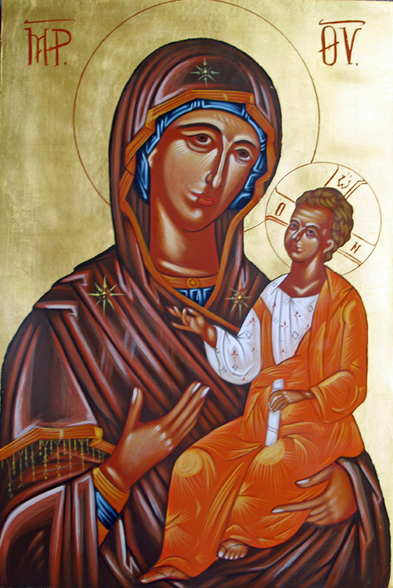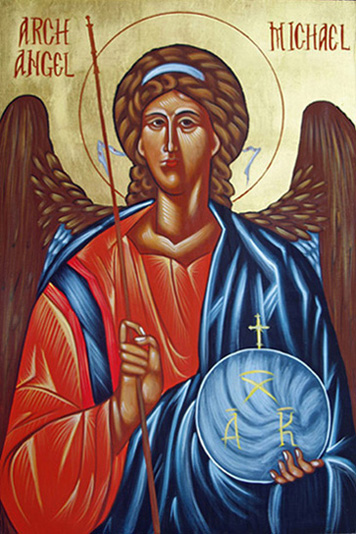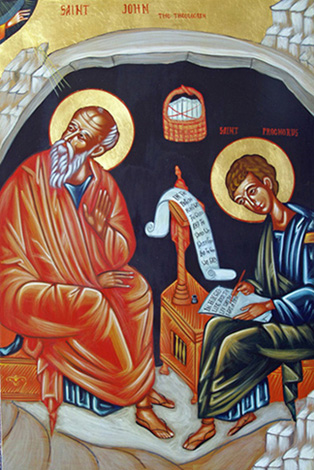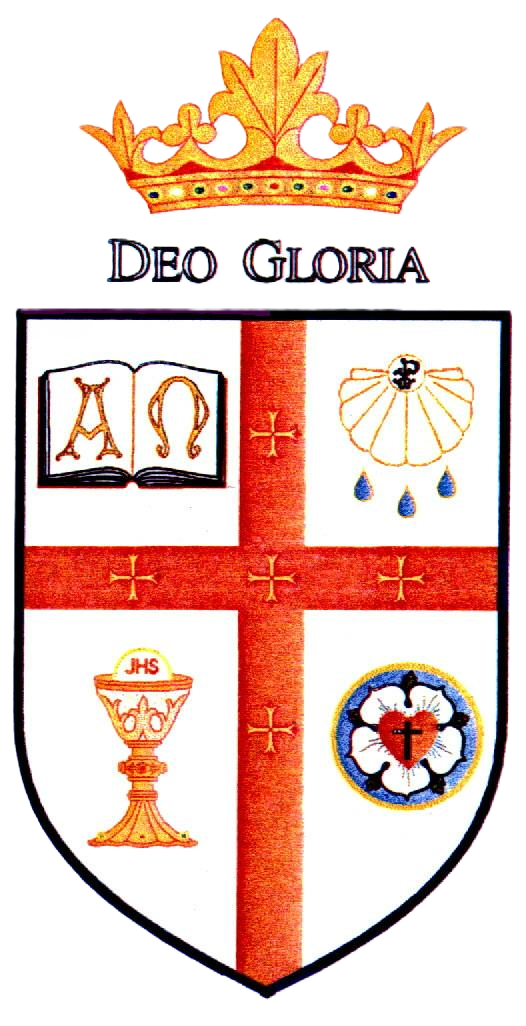Icons









God who has no body, nor form or limits could not, in the past, be represented. But now that He has come in the flesh and has dwelt among men, you can paint on wood and present for contemplation Him who desired to be visible.
St. John of Damascus
Byzantine Iconography by the Hand of Tom Tsagalakis
In 1993 the Orthodox Church of the Assumption in Seattle gave First Lutheran Church of West Seattle a gift of, in celebration of our upcoming 75th Anniversary in September of 1993, the Christ Enthroned Icon. After discovering that the icon was a work by a local iconographer it was decided to commission the Blessed Mary, St. John the Evangelist, the Prophet Isaiah and the Archangel Gabriel, St. Stephen, St. Paul, the Prophet Jeremiah and the Archangel Michael with the theme of the Te Deum in January of 1994. The Te Deum (also known as Ambrosian Hymn or A Song of the Church) is an early Christian hymn of praise. The title is taken from its opening Latin words, Te Deum laudamus, rendered as “Thee, O God, we praise”. The Christ Icon was blessed on April 17th and the others on August 21st, 1994. Our Te Deum Icons are mounted on the choir gallery rail where they beacon us to praise God in Christ Jesus.
Icons are rare in Lutheran churches because of the stress on hearing the Holy Word of God preached. Indeed Martin Luther taught that “ears alone are the organs of a Christian” (Luther’s Works 29:224). So “the church is a mouth-house [Mundhaus],… for since Christ’s advent [the] Gospel is preached orally…. With a living voice…. And mouth” (Sermons of Martin Luther 1:44). Here Luther stresses Romans 10:17, “Faith comes from what is heard, and what is heard comes by the preaching of Christ.” But Luther also said, “it is easy for us to part company [with]…. Iconoclasts. I have criticized the misuse of [icons] and the false confidence placed in them…. But… I have always permitted and urged the use of [them] for beneficial and edifying results” (Luther’s Works 43:43).
Tom Tsagalakis, in his brochure on Byzantine iconography, explains such “beneficial and edifying results.” “The eyes in an icon,” he writes, “are made large and animated because they have seen great things. The ears are also made large to hear the commands of the Lord. The nose is made long and thin, therefore it doesn’t smell the things of this world, only spiritual fragrances. The mouth is small, since there is less importance on physical food and drink (fasting), and more importance on spiritual food ‘the Word of God.’ The halo encircling the head of Christ or the saint depicts the radiant light of their divinity.”
Iconographer Tom Tsagalakis
Tom Tsagalakis resides in Seattle, Washington. He is a graduate of Holy Cross School of Theology and Seattle Pacific University. Tom studied the art of iconography form the inspirational teacher and artist, Kosta Tsilsavides while living in Thessaloniki, Greece in 1987. Tom has written icons for several churches in both the United States and Canada. Tom is currently the pastor of the Holy Apostles Greek Orthodox Church in Shoreline, WA.
